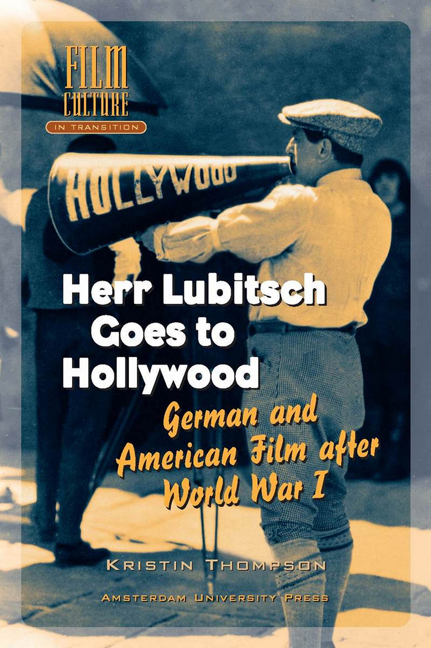Book contents
- Frontmatter
- Dedication
- Contents
- Acknowledgements
- Introduction
- Chapter One Lubitsch’s Career
- Chapter Two Making the Light Come from the Story: Lighting
- Chapter Three Subduing the Cluttered Background: Set Design
- Chapter Four Guiding the Viewer’s Attention: Editing
- Chapter Five Peeking at the Players: Acting
- Chapter Six Mutual Influences
- Epilogue: The Lubitsch Touch
- Notes
- Filmography
- Index
- Film Culture in Transition
- Plate Section
Chapter Two - Making the Light Come from the Story: Lighting
Published online by Cambridge University Press: 14 January 2021
- Frontmatter
- Dedication
- Contents
- Acknowledgements
- Introduction
- Chapter One Lubitsch’s Career
- Chapter Two Making the Light Come from the Story: Lighting
- Chapter Three Subduing the Cluttered Background: Set Design
- Chapter Four Guiding the Viewer’s Attention: Editing
- Chapter Five Peeking at the Players: Acting
- Chapter Six Mutual Influences
- Epilogue: The Lubitsch Touch
- Notes
- Filmography
- Index
- Film Culture in Transition
- Plate Section
Summary
Different Lighting Equipment
Lubitsch's lighting style changed noticeably between his German features made up to 1921 and the two he directed for Paramount in Berlin. It changed again after he went to Hollywood in 1922. Lubitsch's move to the US came at a crucial point in the history of lighting in the two countries, both in terms of the actual technology and of approaches to the placement of equipment in the sets. American lighting styles had undergone major developments from 1915 to 1919, primarily via the proliferation of dark-studio shooting, which replaced sunlight with artificial illumination. Specifically, studios increasingly relied on small arc spotlights and high-powered arcs suitable for night shooting. During the late 1910s, American production companies were depending less on the traditional flat overall illumination provided by sunlight, floodlighting, or a combination of the two. Studio filmmaking turned increasingly to selective lighting, especially back-lighting.
Before the war, European filmmaking technology had generally been parallel to that of American studios. During the war years, however, Germany was largely out of touch with developments in lighting equipment.Over the period when Lubitsch made many of his German films, the studios there were a few years behind the Americans, using lamps designed for flat, frontal lighting.
Lubitsch himself commented on the difference between American and German lighting possibilities. Shortly after he had finished THE MARRIAGE CIRCLE in late 1923, he published an article comparing American and German cinematography. He emphasized the varied equipment he found in America:
The American technique of lighting is different fromthe system used abroad. It is far more elaborate and thanks to the superiority of American technical equipment, surpasses anything I have seen before. I don't know yet how many different lights the American cinematographer has at his disposal.We in Berlin were very proud of our few spot lights and had no idea of the variety of spots you Americans have, from the “baby spots” for small surfaces to those large, powerful fountains of light, the giant spots. There is something for every contingency and each imaginable situation.
Lubitsch singles out the variety of spotlights as a significant difference between the German and American studios. Such spots were to be an important basis for the changes in the look of his films.
- Type
- Chapter
- Information
- Herr Lubitsch Goes to HollywoodGerman and American Film after World War I, pp. 35 - 52Publisher: Amsterdam University PressPrint publication year: 2005



